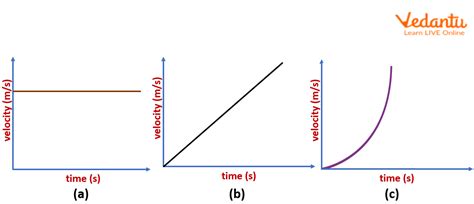Introduction

Velocity, a fundamental concept in physics, describes the rate of change in an object’s position over time. It measures how quickly an object is moving and along which direction. This crucial parameter is essential in comprehending the dynamics of various phenomena, from projectile motion to fluid flow.
Understanding Velocity as a Function of Time
Mathematically, velocity is expressed as the derivative of displacement with respect to time. That is:
v = d(x) / dt
where:
- v represents velocity
- x represents displacement
- t represents time
Types of Velocity Functions
Velocity functions vary depending on the nature of the motion. Here are common types:
-
Constant Velocity: When an object moves at a constant speed in a straight line, its velocity is constant. For example, a car traveling at 60 mph has a constant velocity of 60 mph.
-
Uniformly Accelerated Velocity: An object moving with uniformly accelerated motion experiences a constant change in velocity over time. This can be positive (accelerating) or negative (decelerating). For example, a ball falling under gravity follows uniformly accelerated motion downward.
-
Periodic Velocity: Objects undergoing periodic motion, such as oscillations or waves, experience cyclical changes in velocity over time. The velocity function for a periodic motion often repeats itself at regular intervals.
Applications of Velocity Functions
Velocity functions have a wide range of applications in various fields, including:
-
Projectile Motion: Calculating the trajectory and velocity of projectiles, such as bullets or rockets.
-
Fluid Mechanics: Understanding the flow patterns and velocity profiles of fluids in pipes or channels.
-
Kinematics: Describing the motion of objects, such as cars, airplanes, or satellites.
-
Control Systems: Using velocity functions to design feedback loops for systems that require precise control over motion.
Importance of Velocity Functions
Velocity functions play a critical role in:
-
Safety: Ensuring the safe operation of vehicles, machinery, and other systems where controlled motion is essential.
-
Efficiency: Optimizing the performance of engines, turbines, and other devices by understanding and manipulating velocity patterns.
-
Prediction: Forecasting the behavior of moving objects and anticipating potential outcomes.
Challenges in Measuring Velocity
Accurately measuring velocity can be challenging, especially in complex or high-speed environments. Some common methods include:
-
Laser Doppler Velocimetry: Using lasers to measure the velocity of particles or fluids.
-
Radar: Using radar waves to determine the velocity of moving objects.
-
Inertial Navigation Systems: Utilizing accelerometers and gyroscopes to calculate velocity based on changes in position and orientation.
Conclusion
Velocity as a function of time is a fundamental tool for understanding object motion. By comprehending the various types of velocity functions and their significance, we can gain insights into the dynamics of the world around us. From designing efficient systems to anticipating future behaviors, velocity functions play an indispensable role in science, engineering, and everyday life.
Table 1: Applications of Velocity Functions
| Application | Description |
|---|---|
| Projectile Motion | Calculating the trajectory and velocity of projectiles |
| Fluid Mechanics | Understanding fluid flow patterns and velocity profiles |
| Kinematics | Describing the motion of moving objects |
| Control Systems | Designing feedback loops for controlled motion |
Table 2: Types of Velocity Functions
| Type | Description |
|---|---|
| Constant Velocity | Velocity remains constant over time |
| Uniformly Accelerated Velocity | Velocity changes at a constant rate over time |
| Periodic Velocity | Velocity repeats itself at regular intervals |
Table 3: Challenges in Measuring Velocity
| Method | Description |
|---|---|
| Laser Doppler Velocimetry | Uses lasers to measure the velocity of particles or fluids |
| Radar | Uses radar waves to determine the velocity of moving objects |
| Inertial Navigation Systems | Calculates velocity based on position and orientation changes |
Table 4: Importance of Velocity Functions
| Importance | Description |
|---|---|
| Safety | Ensures safe operation of systems involving controlled motion |
| Efficiency | Optimizes performance of engines, turbines, and other devices |
| Prediction | Forecasts behavior of moving objects and anticipates potential outcomes |
